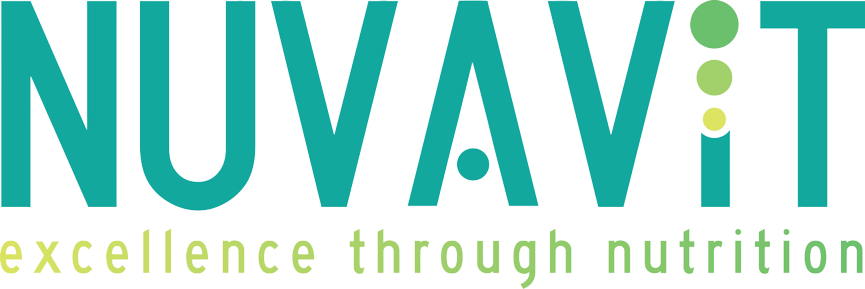








Rumen-Aid® operates specifically in the rumen and intestine!
The unique balance between selected raw materials high in digestible fibres in combination with buffer minerals and propionates of Calcium, Sodium and Magnesium act both in rumen and intestine tissue. This combination stimulates saliva secretion and supports rumination activity for prolong period of time and during meal frequency DMI time gaps leading to higher non-dissociated VFAs thus sub-clinical acidic environment. A cow under sub-clinical acidic rumen conditions are susceptible to diarrhea as ruminal oncotic pressure increased because of lactate acid production which passes through the intestine increasing also oncotic intestine pressure leading to diarrhea. The blend of buffer minerals and propionates increases triglyceride uptake and lipoprotein lipase in the mammary gland providing higher milk fat content. Slow release Calcium and Propionic acid alleviates NEB and stimulate glucose synthesis. Betaine and additional B-complex vitamins stimulates osmoregulation and rumen wall absorbability and energy metabolism.Yeast-based ingredients derived by Saccharomyces Cerevisiae (SC) support mode of action by promoting anaerobic conditions (favourable to microbiota), regulating pH (decreasing lactic acid) and increase relative abundance of fibrolytic bacteria (Fibrobacter ssp., Ruminococcus ssp.).Manna-Oligo-Saccharates (MOS) in combination with Oligofructose(OS) act as prebiotic directly modulating gut microbiota. Are indigestible in the upper gastrointestinal tract (GI) because of their chemical structure but highly fermented in colon selectively by intestinal lactic-acid bacteria (Bifidobacteria and Lactobacilli) to short chain fatty acids utilised rabidly by the microflora and strengthening intestinal epithelium. Specific combination of yeast fractions from several strains influence secretion of immune mediators (Immunoglobulins, Interleukins (IL-10, IL-1β), Citokines (TNF-α) circulating immune cells (Macrophage, B-cells, T-cells) by signalling multiple mucosal surface receptors. Single overstimulation of pro-inflammatory response may have negative impact to the animal.
How to use
Complementary administered together with daily feed of sheep, goats and cows, especially in cases that is indicated to help the function of the pre-stomach and rumination, and in cases of intense heat stress.
Dosage:
Sheep & Goats: 50g/animal/day.
Cows: 200g/animal/day.
Recommended time of usage: Up to 2 months*
*Please take the advice of a Nutrition expert or your Vet, before usage and for the extension of period of usage.
The dairy production cycle can be described by a number of metabolic, endocrine, physiologic, immune, reproductive and behavioural adaptations. The higher the genetic potential of individual cow, the higher the risk of metabolic disturbances. Metabolic disorders and reproductive dysfunctions consequently affect return on investment per cow. Any potential metabolic risk can lead to lower colostrum quantity and quality with lower calcium and immunoglobulin levels, lower milk production, higher immunodepression and higher calving to conception intervals. Establishment of rumen microflora and healthy gastrointestinal tract is the first step to avoid risk of metabolic disturbances and can optimize metabolic functions as a result of optimum and balanced dry matter intake from cows. VFAs (Volatile Fatty Acids) is the primary energy source for ruminants, mainly produced and absorbed in the rumen. Acetic Acid (AA) constitutes almost 60% of total VFAs and is the main precursor for lipogenesis, directly affecting milk fatty acid synthesis in the mammary gland. Propionic Acid (PA) can reach 20% of total VFAs providing energy through its conversion to glucose in the liver. It is the main precursor of lactose, interrelated to milk quantity throughout lactation. The remaining 20% of VFAs refers to butyric, valeric acid. Feed rations depending on Forages to Concentrate ratio can alter pH because of different levels of nutrient fermentability. Forages have high proportion of structural carbohydrates (mainly cellulose, hemicellulose), fermented to AA by cellulolytic bacteria within a rumen pH range between 6-7.¹ Concentrates consist of rapidly fermentable nutrients to PA such as starch and sugars within a rumen pH range of 5-6, by amylolytic bacteria. The more soluble and degradable nutrients are, the higher the VFAs production will be, the lower rumen pH drops. When pH drops, rumen epithelium absorption capacity becomes significantly lower, mainly due to cellulolytic bacteria depressed activity. When rumen pH remains lower than 6 for long periods, fibre digestion is inhibited. Although there is no pH threshold value, researchers² refer that animals with rumen pH at 5.5 for prolonged periods of time are under complex metabolic syndrome of sub-acute ruminal acidosis. The acidic environment is very much depended on VFAs production but also directly linked to rumen microbial population.³

